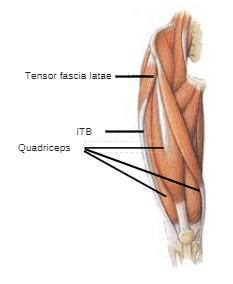What Your Muscles Are Trying to Tell You About Knee Pain
Muscular Causes of Knee Pain: What You Need to Know
Knee pain is one of the most common issues clients mention in my clinic. It can show up in different ways—at the front, back, side, or even just below the knee—and range from mildly irritating to completely debilitating.
While some causes of knee pain are medical (like bursitis, arthritis, Baker’s cysts, or Osgood-Schlatter’s disease), many others are muscular or structural in nature. In this post, we’ll focus on the muscular causes of knee pain—something I work with regularly in my bodywork and massage practice.
Muscles Directly Connected to the Kneecap
The quadriceps, located at the front of the thigh, are directly connected to the kneecap. Tight or overworked quads can pull on the knee joint and contribute to discomfort or pain, especially during activities like walking, squatting, or climbing stairs.
Also related is the iliotibial band (ITB)—a thick band of connective tissue running along the outside of the thigh. Although you can’t stretch or roll out the ITB itself (despite the pain of trying), the tensor fascia latae (TFL) muscle does affect its tension. Releasing the TFL can help relieve lateral knee pain and improve mobility.

Structural Contributors to Knee Pain
In addition to tight muscles, other structural issues can contribute to knee pain, including:
1. Hip Alignment
The hips bear much of the body’s weight. If your hips are misaligned, they can affect the way pressure is transferred down through your knees. Key muscles involved in hip misalignment include the psoas and iliacus.
2. Knee Alignment
Knees that angle inward (valgus) or outward (varus) place excess strain on specific muscles and ligaments. This misalignment can lead to chronic tension and pain around the joint.
3. Feet and Ankles
Uneven wear on your shoes? That’s often a sign of imbalance in the way you walk. If your weight is distributed unevenly across your feet, it places extra pressure on the lower legs and knees, which may result in pain or injury.
How to Ease Muscle-Related Knee Pain
- Foam Rolling: Great for loosening up tight quads, which can relieve tension around the kneecap.
- Trigger Point Therapy: For deeper or harder-to-reach muscles like the TFL, use a small hard ball (like a golf or trigger point ball) to release knots and tightness.
- Remedial Massage & Chiropractic: To address deeper structural issues like hip misalignment or a tight psoas, professional treatments can be especially effective.
- Craniosacral Therapy: To address the issue from a holistic perspective (including emotional) and release them in an incredibly gentle manner.
Final Thoughts
If you’re experiencing knee pain that doesn’t have a clear medical cause, it may be time to look at the muscular and structural patterns in your body. With the right release techniques and realignment, relief is often closer than you think.